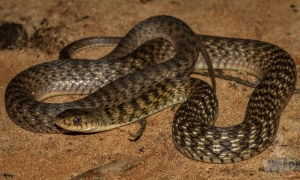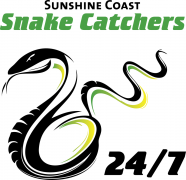
Significance to Humans:
Non-venomous
Usually this species is reluctant to bite however if handled incorrectly or they feel overly threatened they may bite. The keelback is known for emitting a strong odor from the cloaca if handled firmly or they feel threatened.
General description:
Variable colouring but typically various shades of grey, brown or olive with irregular, broken cross-bands or flecks of darker brown and flecks of paler creamy colour. Belly surfaces cream or pale rusty colour with dark scale edges. Feature is each scale has a distinct raised longitudinal ridge or ‘keel’, giving the whole snake an appearance of parallel ridges down length of body. Assumably confused with the highly venomous Rough-scaled Snake (Tropidechis carinatus) which lacks a loreal scale and whose keeling of the scales is less defined. Midbody scales at 15 (rarely 17) rows. This snake grows to be around 60cm to 80cm long. Keelbacks are commonly associated with damp or moist habitats. Often found near swamps, dams, along riparian zones and associated drainage lines well into farmland and suburban localities. Keelbacks predominantly eat Frogs, lizards and occasionally fish and tadpoles. Often noted for its ability to eat the introduced Cane Toad but only smaller toads and their tadpoles are generally targeted.
Around the Sunshine Coast:
Found throughout moist suburbs or areas where creeks and drainage lines, both natural and unnatural, persist. We have caught keelbacks in majority of suburbs within the area. They can often found in high numbers in suitable localities especially in the vicinity of marsh or dam habitats. Often seen foragin beneath low vegetation, logs, woodpiles, water features & moist areas etc, where potential prey may be found. Has been noted to exploit small fish in constructed backyard ponds.
